Friday Fundamentals – Terminology
#fridayfundamentals
In reply to the Back to Basics WheelgunWednesday post, a pertinent question came up.
“I was ‘hammering’ instead of firing a ‘controlled pair.’
What do you mean by hammering?”
Great question – thanks for asking. Sometimes we trainers take our subject matter knowledge for granted. Several concepts developed by Jeff Cooper have remained constant despite having been formulated nearly half a century ago.
Fundamental Terminology
- Flash Sight Picture
- Controlled Pair
- Hammer
Flash Sight Picture
The concept of accepting that perfect sight alignment is not necessary to achieve an acceptable hit. Shooters often assume that they need to obtain a perfect sight picture for acceptable hits.
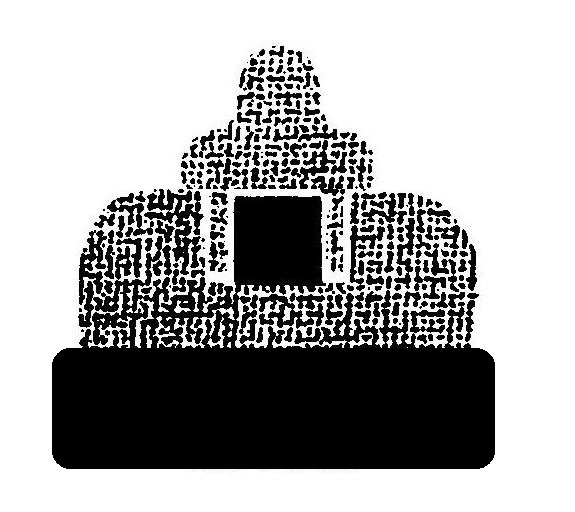
That’s not necessarily the case, depending on the distance to target.
https://thetacticalprofessor.net/2015/02/06/89081/
https://thetacticalprofessor.net/2015/10/02/friday-fundamentals-segment-2/
Controlled Pair
Achieving an acceptable sight picture on a target, firing a shot, bringing the pistol down in recoil, obtaining a second acceptable sight picture, and firing a second shot.
Hammer
Achieving an acceptable sight picture on a target, firing a shot, bringing the pistol down in recoil, and firing a second shot using only a physical index to the target without regard to achieving a second sight picture.
Note that the term ‘double tap’ is obsolete because it could refer to either a controlled pair or a hammer and so is inadequate as a description. Others have written in-depth articles about Cooper’s concepts so I will just link to them.
Flash Sight Picture
Chris Baker
Jim Wilson
https://www.americanrifleman.org/content/sheriff-s-tips-understanding-the-flash-sight-picture
Hammer v. Controlled Pair
Jim Wilson
https://www.americanrifleman.org/content/whatever-happened-to-the-double-tap
Darryl Bolke via Greg Ellifritz
Chgowiz wins a free book of mine for asking a great question.
Back to Basics WheelgunWednesday
#wheelgunwednesday
Going back to basics occasionally helps me get back in the groove. Two basic exercises I like for the snub revolver are the LAPD Retired Officer Qualification Course and the NRA Basics of Pistol Shooting Level 1 test.
The LAPD course is described in the LAPD Manual.
“The starting position for this qualifying course of fire will begin at the 7 Yard Line. When the target faces, the shooter will draw and fire 10 rounds at a single silhouette target. A score of 70 percent is required to pass the qualification. All rounds impacting anywhere on the body and head will receive full value and rounds impacting upon the arms are half value.”
Basics of Pistol Shooting Level 1 test consists of shooting five shots into a circle that is four inches in diameter at a distance of 10 feet. All five shots must hit or cut the circle. It must be done four time, not necessarily consecutively, to pass BOPS.

For both tests, I include opening and spinning the cylinder periodically to create ball and dummy practice. In the LAPD Course, I also include a few initial dry practice draws, a la the NY State CCL Qualification, staggered loading with loose rounds during the first five shots, presenting from Low Ready, firing different numbers of rounds, and a reload with a loading device for the second five.
During my initial run of LAPD (I did four), I noticed that a couple of my shots went high. Upon repeating it, I realized that I was ‘hammering’ instead of firing a ‘controlled pair.’ That was probably the reason I had a couple of high hits during the Rangemaster Pistol Match https://thetacticalprofessor.net/2024/04/10/tactical-conference-2024-pistol-match/.
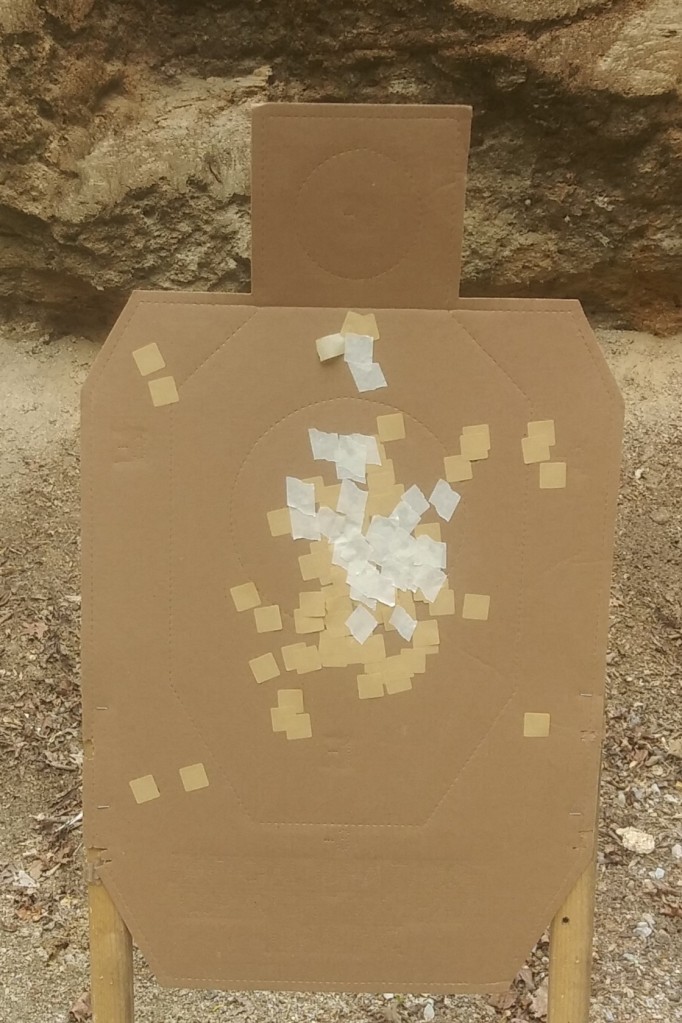
I used a target that I found on the range. The hits covered with masking tape are mine. The ones with pasters are from the previous and unknown shooter. The two hits just below the neck line were the ones probably the result of hammering.
Since BOPS has four strings, I used the opportunity to tune up with several different loading devices. One was an HKS speedloader and the others were various tools from Zeta6 that I like. All the Zeta6 devices are modified with Retention Rings. I find the Retention Ring is a handy addition for getting the device out of my pocket.
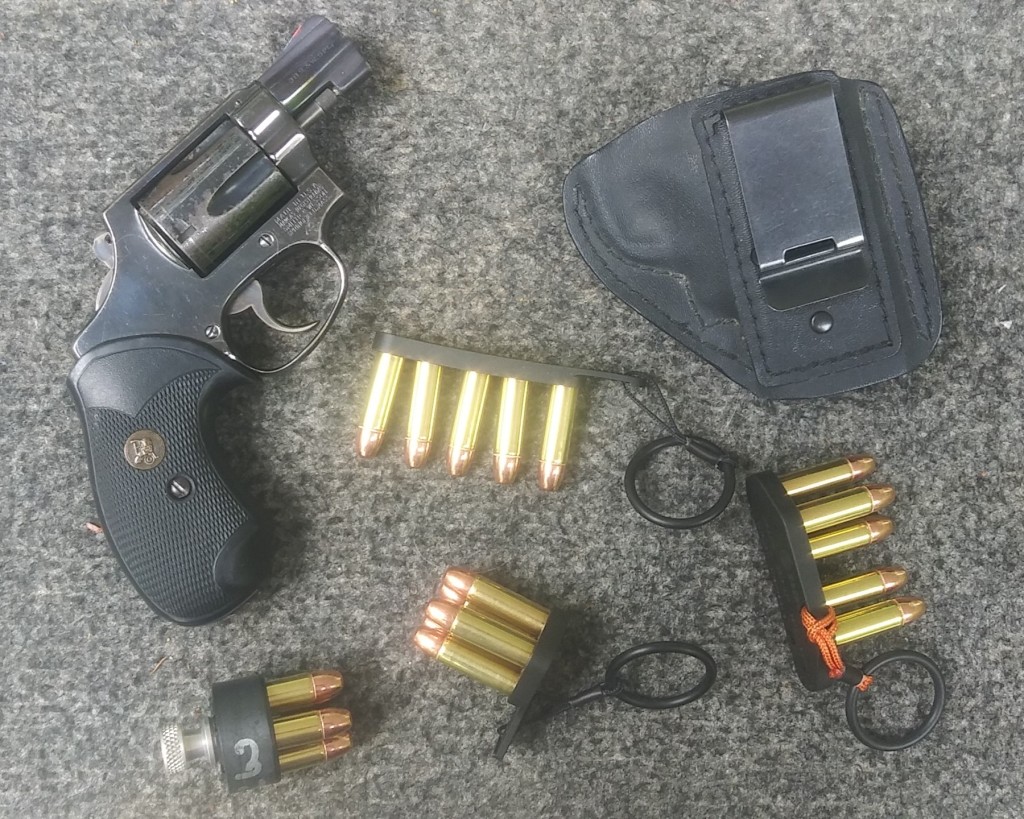
It was a nice little tuneup. The day was nice and the results were satisfying.
Tactical Conference 2024 – Loot and Looted
At every Conference, Seminar, or industry gathering, the attendees always return with items given away by Presenters and other attendees. TacCon 2024 was no exception; I call this ‘Loot’ and I returned with some good items.
Loot
Books

Good reading material courtesy of Chuck Haggard, my hostess for the weekend, Andy Stanford, and Greg Ellifritz.
Targets and Drills

At the end of Andy Stanford’s Practical Handgun Drills class, he gave us laminated copies of the Surefire targets and a double sided sheet of drills for using them.
Cool Stuff
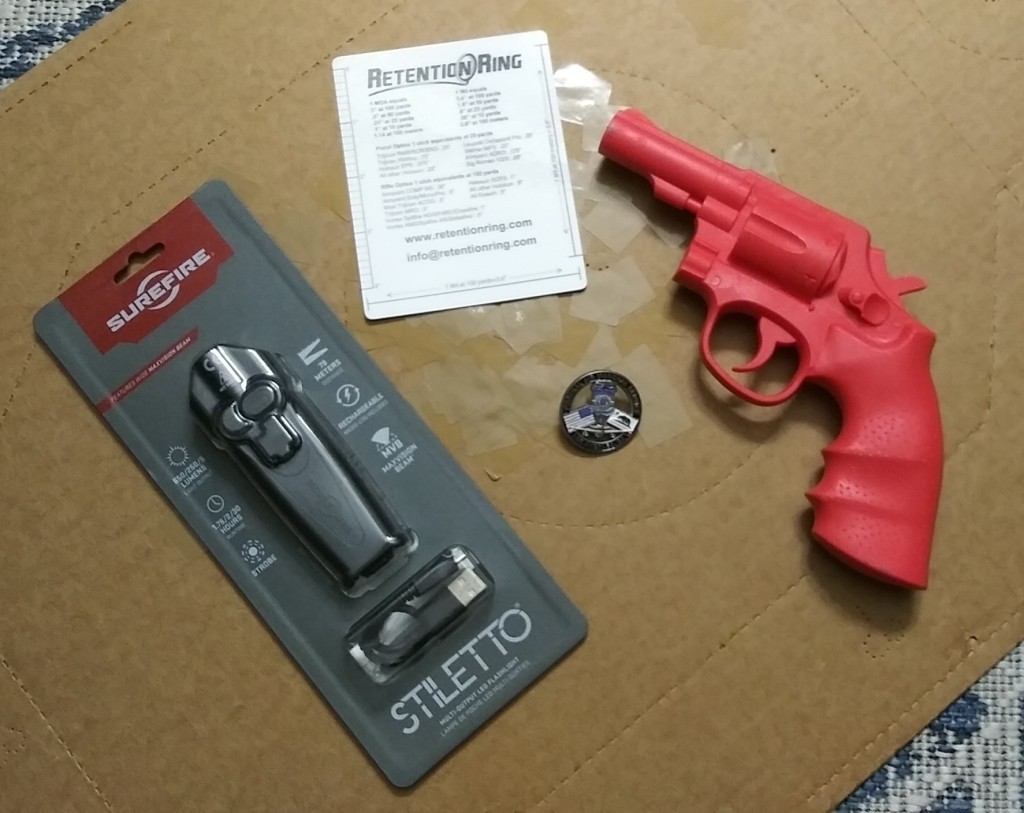
Yet another doubloon from Andy Stanford was a Surefire Stiletto flashlight, given to all the trainers at the event. Retention Ring gave me a nice laminated card as an aid for adjusting pistol and rifle optics. A friend in the Air Marshal Service presented me with a cool pin and Chuck gave me a unique and apparently one off revolver inert gun.
Looted
Notice that there is no picture of the package of Narcan gifted to me by Greg Ellifritz. That’s because it was ‘liberated’ from my suitcase while in the custody of Frontier Airlines on the trip home. Whether a sticky fingered baggage handler got it or it was ‘seized’ without notice or an inspection tag by the TSA is unknown to me. Sunny Hostin might think the Total Eclipse disintegrated it while in the aircraft’s hold. When I opened the suitcase, I thought things were arranged a little differently. A bit later I realized that the Narcan had taken a walk.
That’s the last time I’ll ever fail to secure my suitcase with a TSA lock and a zip tie. I didn’t feel it was necessary this time because I didn’t have a pistol in my suitcase but it’s a lesson learned.
Many thanks to my friends for their generosity. Whether presenting or attending, there’s always interesting stuff given out at conferences. I’m looking forward to duplicating the Surefire targets and shooting Andy’s drills for them.
In Memoriam to all the heroes of the Miami Massacre, April 11, 1986. https://en.wikipedia.org/wiki/1986_FBI_Miami_shootout

Tactical Conference 2024 Pistol Match
#wheelgunwednesday
I shot the match with my Taurus 856 snub.
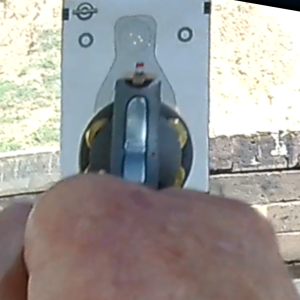
Here’s a video short of the Pistol Match https://youtube.com/shorts/uFh9EogmeAY?feature=share
Course of fire
All strings were shot at turning targets in 4 seconds.
3 yards
- 6 shots from concealed holster (6/6)
5 yards
- 5 shots from concealed holster (5/11)
- 5 shots from concealed holster (5/16)
- 4 shots Primary Hand Only from Low Ready (4/20)
- 3 shots Support Hand Only from Low Ready (3/23)
7 yards
- 4 shots from concealed holster (4/27)
- 4 shots from concealed holster(4/31)
10 yards
- 2 shots from concealed holster (2/33)
- 2 shots from concealed holster (2/35)
5 yards
- 5 timed {3.53} face shots from Low Ready (5/40) These shot were scored with Comstock scoring.
This was my final target score. I pulled a few out of the circle but none below the belt or off the silhouette.
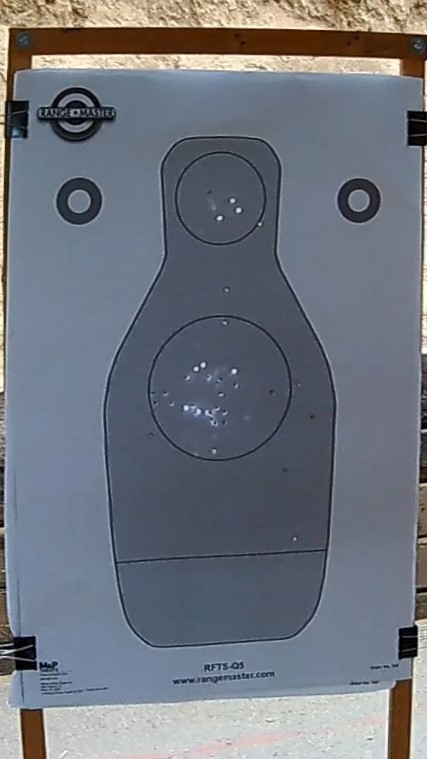
McGee’s Paradigm

“Three shots in three seconds at three yards.” That was Lt. Frank McGee’s iconic summation (McGee’s Paradigm) of the typical gunfight of New York City police officers in the 1970s. Lt. McGee was the head of the NYPD Firearms and Tactics Section at that time. His analysis came from the Department’s SOP-9 report, which began compiling statistics about the gunfights of its officers in 1969. Although the scope and name of the report has evolved over time, it is still published by the NYPD and available online. McGee’s Paradigm hasn’t changed much over the past 50 years.
Since most gunowners are limited to shooting at indoor ranges, learning to shoot against a time standard has always been an issue. Shot timers usually work by tracking the noise from each shot and are therefore not always useful in the indoor-range environment because of adjacent shooters. Besides this, casual shooters are generally unwilling to spend over $100 for a shot timer.
The widespread nature of smartphones and Bluetooth earbuds have given us a solution to this problem. There are several timing apps for Smartphones available online. Used in conjunction with Bluetooth earbuds underneath earmuff-based hearing protection, practicing marksmanship with a par time is now easily accomplished.
https://www.shootingillustrated.com/content/three-shots-in-three-seconds
A demonstration video is available at https://youtu.be/8kL0bUQWsfI
Here’s a target for the final 20 rounds of the 50 round session.
SixFerShur
I will be conducting the 2024 Revolver Operator Course this May in North Georgia.

May 4, Dahlonega, Georgia – Home Range of The Complete Combatant
One Day – $199 plus $20 Range fee
Important: Although a few exercises will be shot with small (J Frame ish) revolvers, this is NOT a J Frame course. You will need a full size (K frame or equivalent) revolver to attend. Shooting 300 rounds in a day through an Airweight J Frame only teaches one thing; how to flinch.
https://www.shootingclasses.com/thecompletecombatant/course/?courseId=4493
The Pence Drill is one of the two keystone drills of the Revolver Operator Course.
Fair attribution: I liberated the SixFerShur title from Tamara Keel’s blog post because it’s hilarious.
https://booksbikesboomsticks.blogspot.com/2024/03/narrow-focus-cartridge.html
That’s probably what I’ll call the class from now on because “Revolver Operator Course” sounds so mundane by comparison.
Shooting Practice for a Criminal Encounter
The second installment of my Shooting Illustrated series about organizing your shooting practice is now online.
https://www.shootingillustrated.com/content/shooting-practice-for-a-criminal-encounter

I always include more photos with my article submissions than can be used. After this paragraph in the article, I included what is possibly my favorite shooting photo of all time.
Shooters often blast an entire box of ammunition at the target without checking and then marking it consistently. This is one of the worst mistakes that can be made when practicing for marksmanship development and self-defense.
Sadly, along with several others, it was cut for space reasons. The photo is of a target that was left up at my gun club years ago. Every time I look at it, I literally Laugh Out Loud. I call it the ‘goober target.’

That is not the way to learn how to shoot to hit anything. Another photo that was cut shows how to mark your target with masking tape every few shots.

As mentioned in the article, checking and marking your target regularly will help you improve your marksmanship. Blasting away and creating a goober target will not.
Here is the Pump target. No one can say you’re practicing to shoot unarmed people if you have a representation of a gun on your target.
It’s getting to be a wild world out there; be ready.
Taurus 856 Iron Sights v. Laser Comparison
#wheelgunwednesday
Taurus had a screaming deal for 856 revolvers on its website last month. The deal was a Viridian Laser Stock (Grip), Boltaron (Kydex) holster, and two HKS speedloaders for $139. I’m a believer in laser stocks for snub revolvers so I decided to take advantage of the deal and purchased it. I also purchased an Ameriglo front night sight but haven’t installed it yet. FTC note: I made this purchase with my own money, no manufacturer giveaway.

This Viridian laser has the activation button on the front of the stock so when the revolver is gripped, it comes on. This is a far superior system to having to manually press a button to turn the laser on. The stock is also slightly longer than the factory stock so it provides a full three finger grip.
Installing it requires driving out the roll pin that holds the factory stock in place. Once the pin is out, the laser stock is secured via three screws. Pro-Tip: put the bottom screw that goes through the roll pin hole in the frame first. It was relatively well zeroed as it arrived but I later zeroed it at 7 yards when I got to the range.
The UM Tactical Holster was much better than I had anticipated. I thought ‘UM’ meant it was an offshoot of Uncle Mike’s but that assumption is incorrect. It fits the 856 well and the clip holds it securely on the belt. I loosened the tension slightly so that when the holster is held upside down the gun doesn’t come out but it draws easily.
The HKS Speedloaders were the Model 10 developed for the K frame S&W revolver many years ago. Two were included.
To make a comparison of the capabilities of the laser vis-à-vis the iron sights, I did a range trip. The evaluation protocol was the Nevada Concealed Handgun Permit Qualification Course, which is one of my favorite practice structures. It consists of 30 rounds fired at 3 yards (6 rounds), 5 yards (12 rounds), and 7 yards (12 rounds). The evaluation consisted of splitting it in half, shooting one half (15 rounds) with the laser on and one half (15 rounds) with the laser off. I broke the course into several strings for each distance and timed each string.
3 yards – 1 shot from the Holster, 1 shot from Low Ready, and 1 shot from Retention. Three rounds for each sighting system.
5 yards – 2 shots from the Holster, 2 shots from Low Ready, 2 shots from the Holster Primary Hand Only. Six rounds for each sighting system.
7 yards – Repeat the 5 yard sequence at 7 yards.
It was a cloudy afternoon not bright sunlight. I had no trouble seeing the laser dot at 7 yards on the USPSA Metric targets I used. Each system had a separate target.

For scoring, I divided the A zone in half. This gave an A zone of 6 inches wide by 5.5 inches long. Hits in the lower part were counted as B hits. This is a scoring system the late Todd Louis Green https://pistol-forum.com/ suggested and I like it. It’s more rigorous than the IDPA -0 zone. The time for each string was recorded.
The results of both sighting systems were then overall Comstock scored. https://www.ssusa.org/content/understanding-uspsa-comstock-and-virginia-count/ This means points achieved divided by shooting time. The results were interesting. The Iron sights had a Comstock score of 4.33, while the Laser had a score of 4.29. Not a significant difference and the laser was not nearly the disadvantage in daylight that’s popularly assumed.

The next phase of my evaluation will be to shoot the same protocol in bright sunlight and at dusk. Those results should provide some interesting contrast.
With regard to the holster, I found it to be quite satisfactory. My only observation is that because the gun and holster is so short, the butt of the gun tends to droop forward and reduce my concealment. On the way home, I stopped at Arbol de Dolares to purchase La Chancla https://www.npr.org/sections/codeswitch/2014/11/04/361205792/la-chancla-flip-flops-as-a-tool-of-discipline . I’ll cut a piece of the flip-flop off to glue onto the back of the holster as a pad, a la Keepers Concealment. https://keepersconcealment.com/
Overall, I very pleased with the results. This makes about 700 rounds through the 856 with no issues. The laser worked well and the holster is satisfactory. A good EDC that I’m comfortable with.
FBI Double Action Course
#wheelgunwednesday
Prior to the FBI adoption of the Wheaties cereal box sized S&W Model 1076 in 1990, revolvers were the Bureau’s sidearm for well over half a century. After the FBI switched to the S&W Model 13 revolver in 1981, it created a publication, FBI Revolver Courses and Techniques, for using the gun with the Weaver technique.

“Sight Alignment: During close-in shooting (five to seven yards), the shooter does not have time to acquire perfect sight alignment. The shooter is, therefore, instructed to fire with both eyes open and to bring the sights up to eye level, seeing the front sight in the secondary vision. As distances increase, the need for better sight alignment increases and trigger pull should be slower.”
One of the Courses in the publication is the Double Action Course. It is intended as a practice regimen for double action shooting. The par times are short as is the allotted time for the one reload included. All strings are fired from the holster except one string at 15 yards.
DOUBLE ACTION COURSE (DAC)
The entire course is fired using the Weaver Position.
5 Yards
6 rounds -2 rounds on each whistle (in 3 seconds)
4 rounds -2 rounds on each whistle (in 3 seconds)
7 Yards
6 rounds -2 rounds on each whistle (in 3 seconds)
4 rounds -2 rounds on each whistle (in 3 seconds)
10 rounds -Load 6 rounds, on whistle, fire 6, reload 4 rounds, fire 4, all in 20 seconds.
15 Yards
6 rounds -2 rounds on each whistle (in 3 seconds). Fired from Weaver Ready.

4 rounds -All 4 rounds in 6 seconds
25 Yards
5 rounds -All 5 rounds in 10 seconds kneeling position
5 rounds -Repeat
Scoring: 2 points each for hits in either the KS or K4 area.
100 points possible.
Firing at an indoor range where drawing from the holster isn’t permitted can be done by using a table start.

Par times can be used via ear buds underneath hearing protection muffs and a par timer app on one’s cell phone. The phone’s Bluetooth connection will transmit the start and stop beeps to the ear buds.

Although it was shot by FBI Agents on the huge B-21 target, any silhouette will do.

It’s a fun course and very practical for those who carry a weapon.

Note to indoor range owners and operators. Granted that OSHA regulations can be onerous to work downrange maintenance with. But having inoperative carriers, targets left downrange on carriers and on the floor, thousands of fired brass cases in front of the booths, etc. presents a very unappealing scenario to the public. This is not a new phenomenon. In 1919, Walter Winans devoted an entire chapter WHY PISTOL SHOOTING IS UNPOPULAR in his book The Modern Pistol and How to Shoot It about the unpleasantness of this experience.
The Value of Historical Methods
A viewer of my Shooting to Live Advanced Methods demo YouTube video asked an interesting question.
“Do you think that there is any value added by practicing the WWII Combatives shooting methods beyond learning historical training firsthand?”
In a conversation with him, he further elaborated that he was asking from his perspective as a competent shooter who practices regularly using demanding time and accuracy standards. From that perspective, my answer was NO. The only value to him would be for historical academic interest. There is nothing that will be learned of practical value for someone with his level of proficiency.
However, I continued on by saying that to the millions of first time gun buyers of the past few years, MAYBE. Only a miniscule fraction of those people will ever take a class on gun safety and learn how to shoot to some standard, whatever that standard might be.

For those millions of first time gun buyers, studying actual WWII shooting combatives, such as Shooting to Live and Field Manual 23-35 Pistols and Revolvers (1946), could have some value. Shooting to Live and its immediately successor, US Army Combat Firing, at least provide some structure and standards for brand new pistol shooters. Any system based on real combat is preferable to going to an indoor range and randomly blasting away based on what’s shown on TV.

I began the long term series about ‘Unsighted Fire’ aka Point Shooting on Patreon for a very specific reason. It is that obviously the vast majority of people who write about point shooting or make YouTube videos on “Fairbairn Method” shooting have never really read or studied any of the literature about it, including Shooting to Live. From the perspective of an historian and researcher, this lack of fact based information is both annoying and disturbing.
The gunhandling and safety aspects of WWII pistol combatives alone have a great deal of merit. Gripping the pistol properly. A strong emphasis on practical gunhandling in addition to marksmanship. Including malfunction clearance in early stages of Live Fire. Equal weight on Dry Practice as Live Fire, especially prior to the initial firing practice. Highlighting the concept of treating a pistol as always loaded. Emphasizing the importance of muzzle direction when handling a pistol. Practicing clearing and making the pistol safe when less than a magazine has been fired. Those are all highly useful skills, probably even more so than the marksmanship standards, which were not very high.

But please avoid muzzling your instructors. We won’t be happy about that. We will try to keep away from putting ourselves in a position where you can.

While the hit standards Shooting to Live and Field Manual 23-35 Pistols and Revolvers (1946) establish are rudimentary, they do give new shooters an idea that they’re supposed to actually hit something when shooting. The standard in Shooting to Live is 50 percent hits on a silhouette for single presentations within Social Space (4 yards). The 1946 US Army standard was 100 percent hits for single presentations on an E Silhouette at 5 yards.

Although most proficient shooters today would consider the techniques obsolete and the standards mediocre, at best, they’re still better than practicing what’s seen on TV and in movies. TV and movies are where most gunowners’ training takes place and that’s bad news.
If you would like to follow my Patreon page to go into more depth about point shooting and personal protection incidents, click on the image below.

You must be logged in to post a comment.